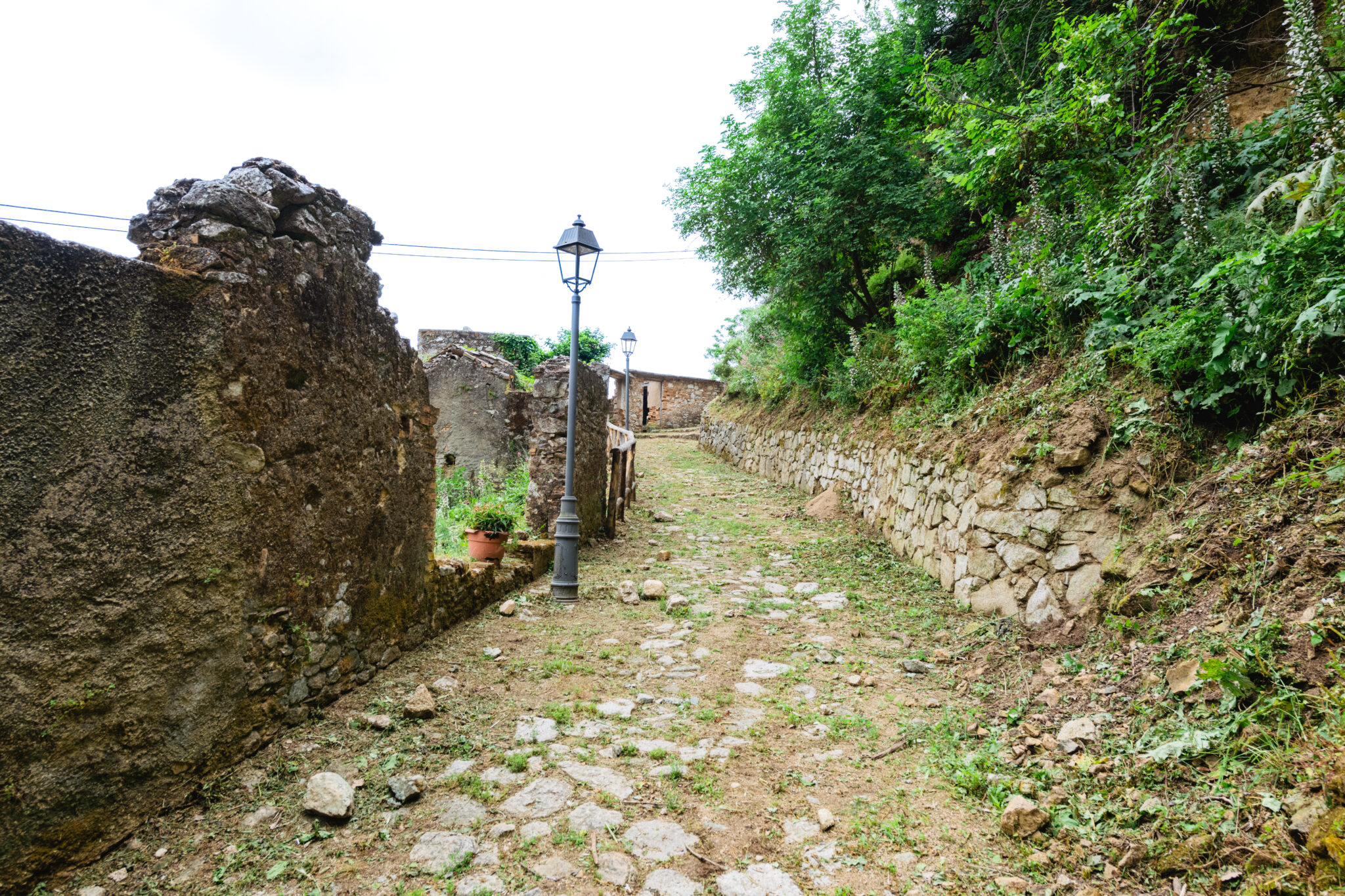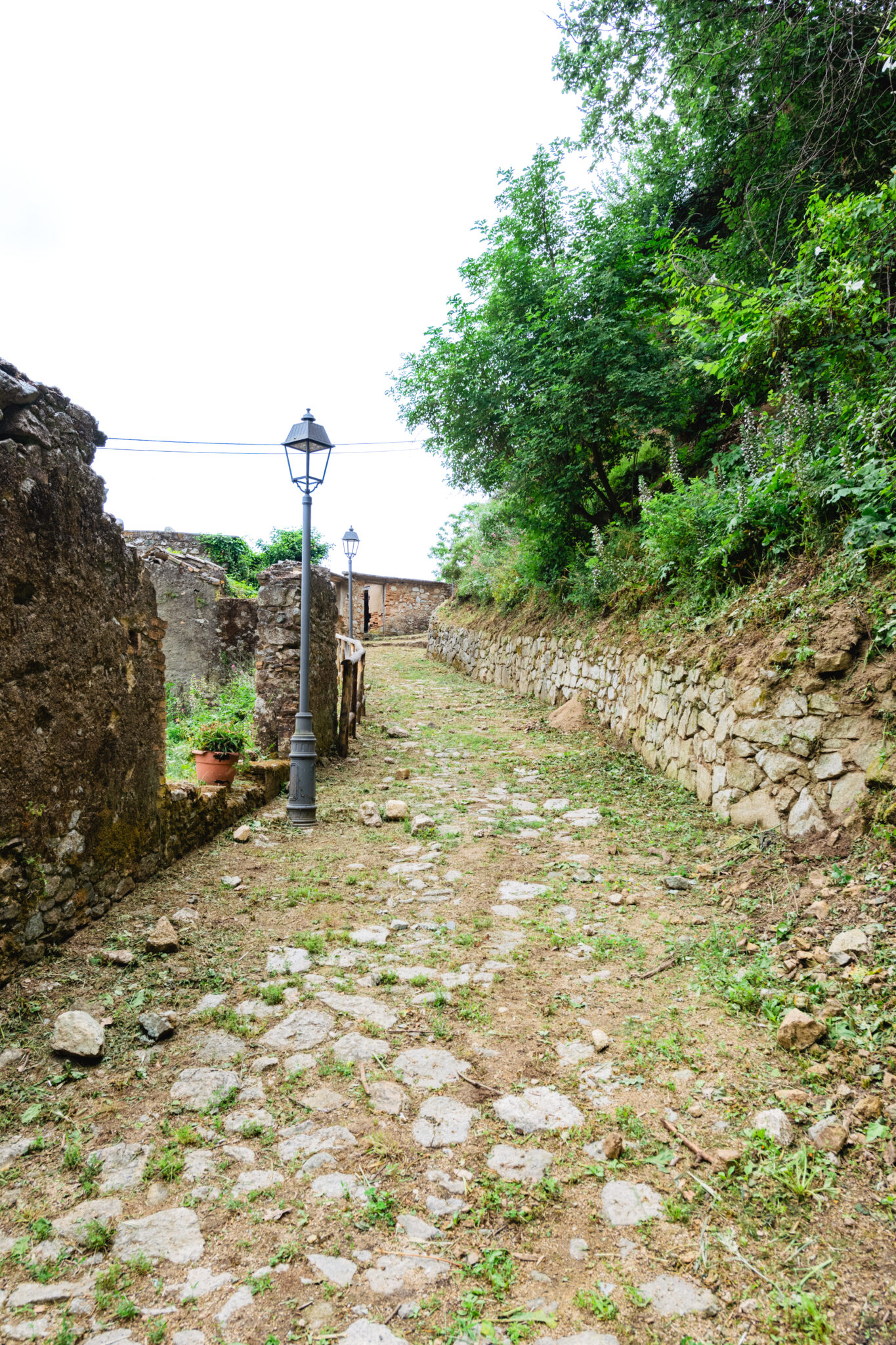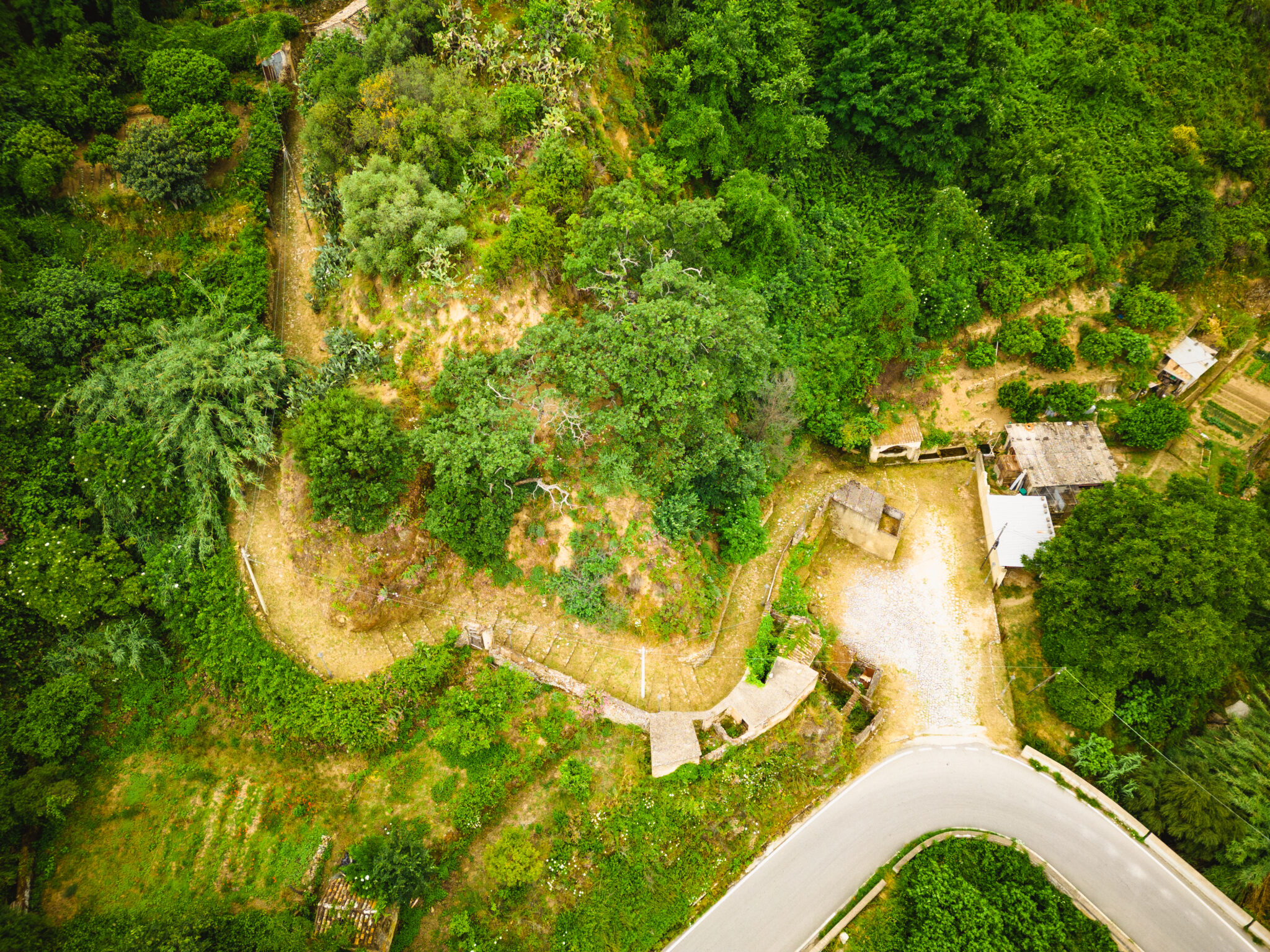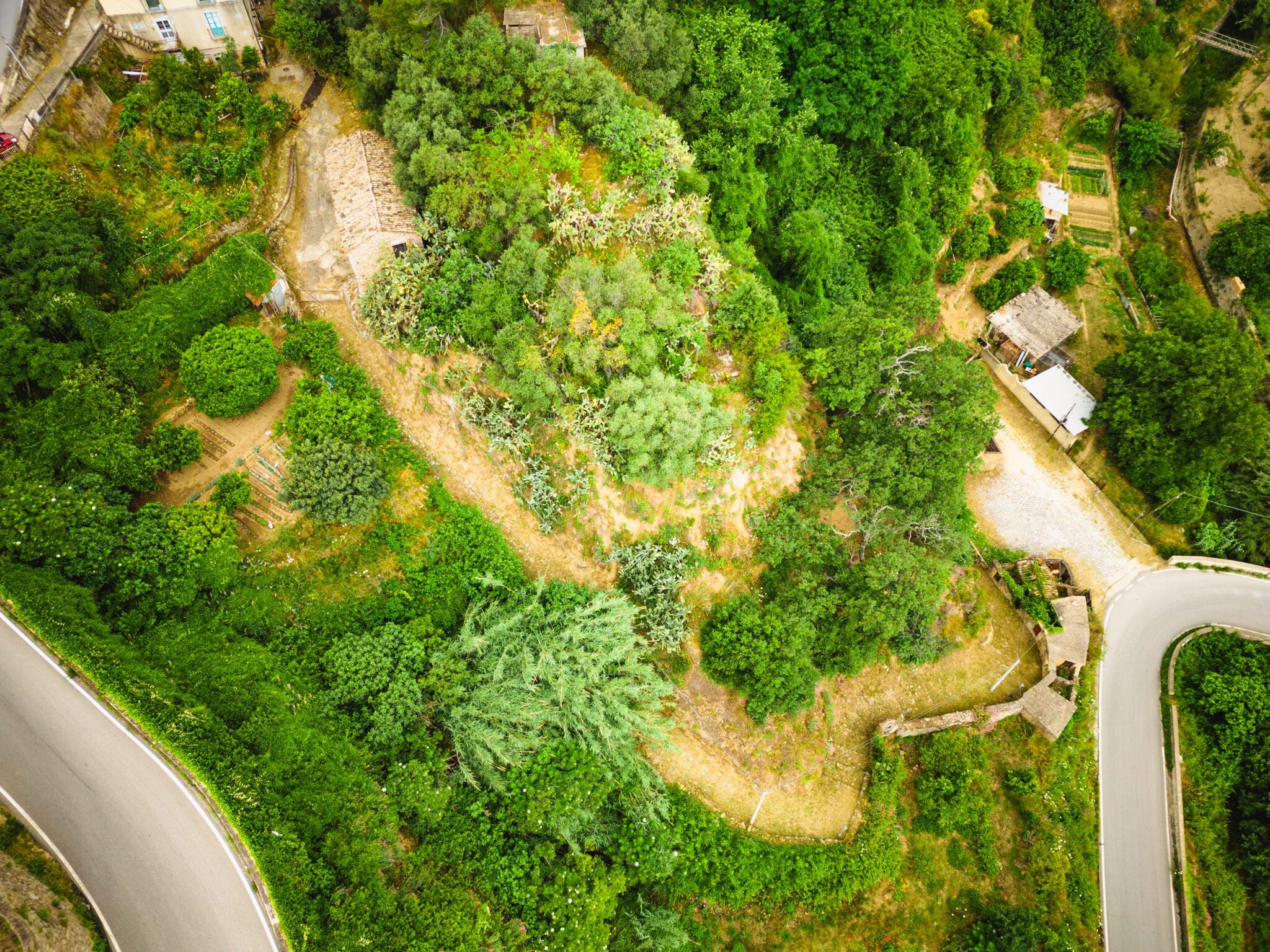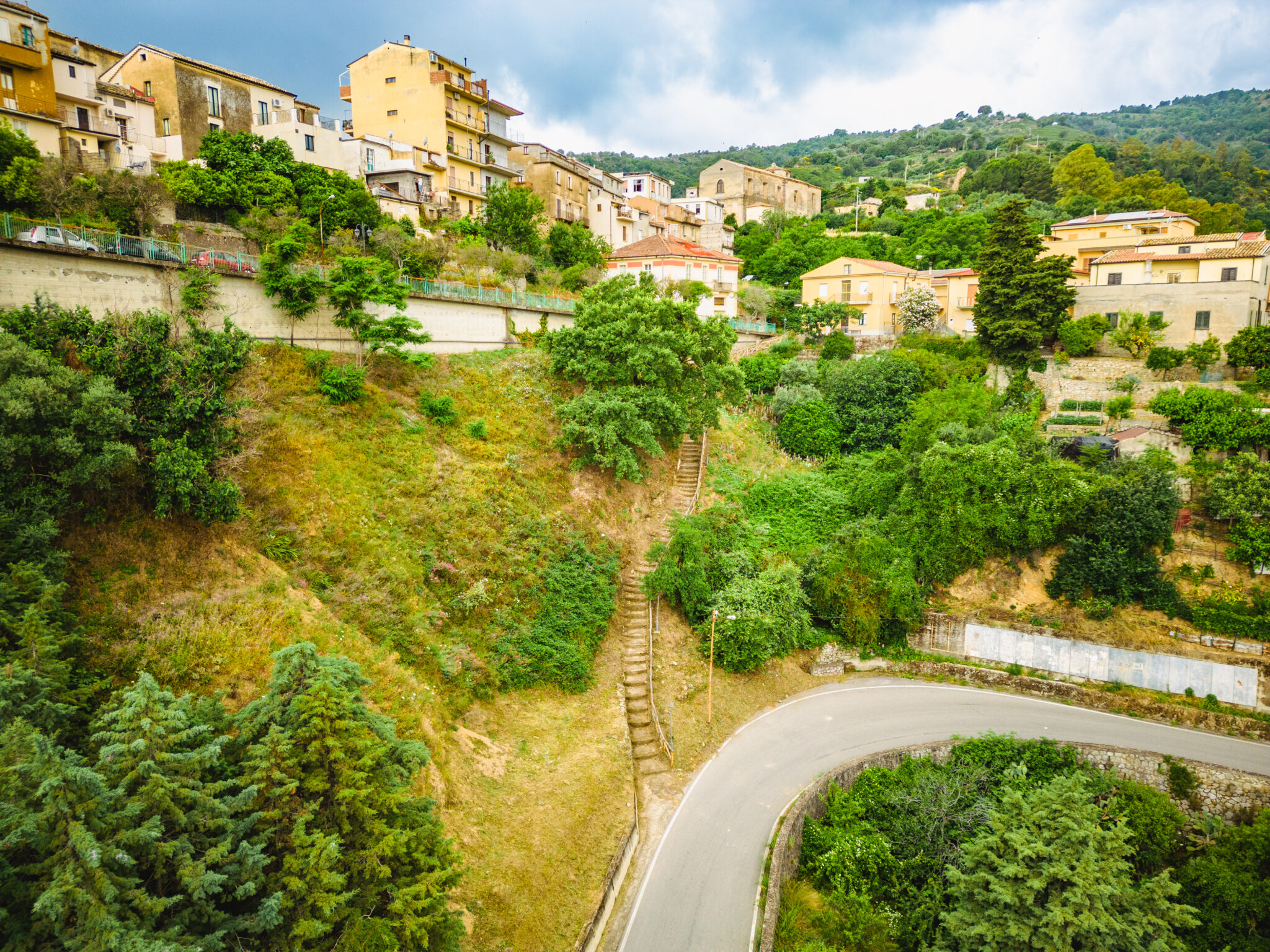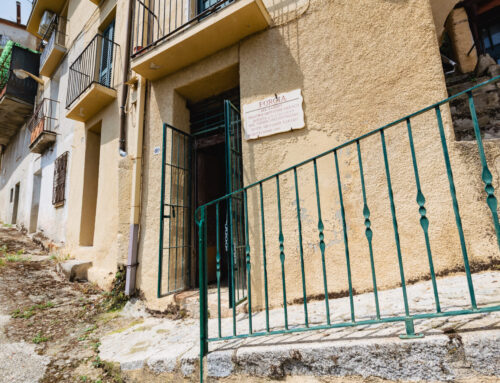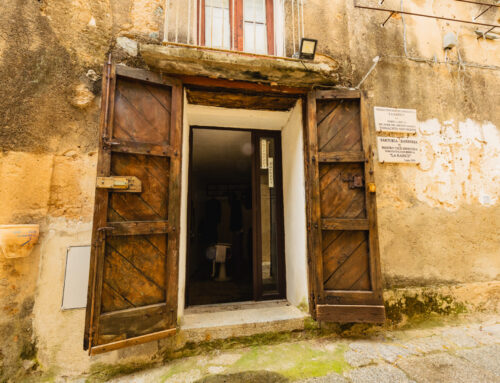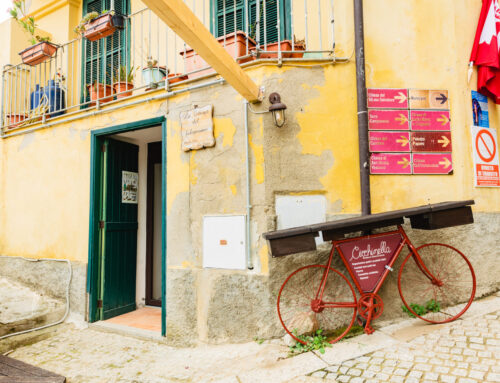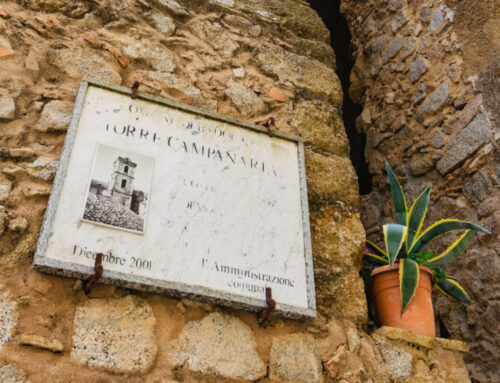Granite, the typical stone of our riverbanks, carried on the backs of donkeys, but more often on the heads of our women, was brought to the city to build all kinds of structures with mortar. It was also used to pave the city streets without mortar, creating stepped paths. This was done both because of the slope of the land and to make it easier to walk uphill and to avoid slipping on the way down.
Stone was also used to build some of the roads leading out of the city. The longest and most frequented road started from the medieval gate of ‘e Jàpacu (East), passed by the church of the Immacolata, and then divided into two sections, both of which reached the Vodà stream, one higher and the other lower, before becoming a narrow path along the river bank to the marina.
The ‘a mpetràta ‘e Cerasìa road also started from a gate, that of Mancùsu, and was used by all the Mancusàni who had to go to the hills, from San Rocco to Guardia, as well as to the marinas of Bàrrena, Cercìdo, Mazzaferro, Cardàra, Vallìna and Gallìpari. It was also well served by the abundant Granèli spring, which provided refreshment for both man and the oxen and donkeys that drank from it. The road ended – and still ends – at the Granèli stream, at a crossroads. Those who wanted to go to the port followed the stream and climbed up to Mingiànu to continue eastwards. Those who wanted to reach the hills could easily climb the beautiful Petta ‘e l’Àngiali.


